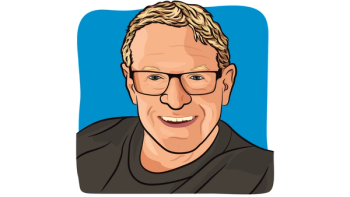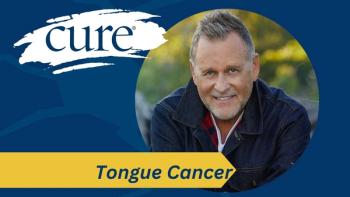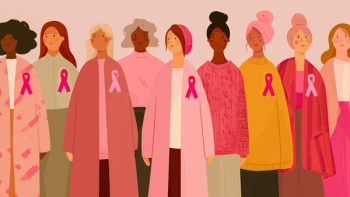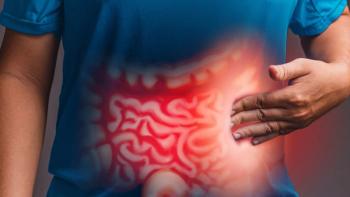
From Patient to Researcher: It’s Not All About the Cure
Key Takeaways
- Traditional cancer treatments, though effective, often result in severe short- and long-term side effects, impacting survivors' quality of life.
- Immunotherapy, including CAR-T cell therapy, offers a promising alternative by utilizing the immune system to target cancer cells.
I’m working to make cancer treatments less painful by developing donor-derived CAR therapies, so others don’t have to suffer the way I did.
For many childhood cancer survivors, the memory of treatment — vertigo, exhaustion, pain — overshadows the disease itself. While today’s therapies can be effective, they often come at a devastating cost to quality of life. In this piece, I share how survivors like me are stepping into cancer research and turning to immunotherapy in search of gentler, smarter treatments that heal without harming.
I was diagnosed with lymphoma at the age of 3. I had uncontrollable fevers and digestive issues. It took several trips to different medical centers for doctors to figure out what was wrong. I don't remember most of that. What I do remember is what came after: missing school, feeling cold all the time, throwing up, the room spinning around me, time going slow, and people moving fast, the pain when my dad picked me up by my armpits. The horrible taste of contrast media before every CT scan. I remember praying that no other children would have to go through the same pain I was going through.
Growing up, I didn’t want cancer to define me. But I still went to medical school — partly to understand how my cancer happened, mostly to learn how to make it hurt less. I kept returning to the same question: Can we treat cancer without causing so much suffering?
The Problem with Current Treatments
The three traditional pillars of cancer therapy — surgery, radiation, and chemotherapy — have significantly improved survival rates. But they often come with severe side effects. For patients, especially children, the treatment can feel worse than the disease.
Short-term side effects include nausea, pain, hair loss and vertigo. Long-term effects can be more life-altering: infertility, cognitive impairments, heart problems, or even a second cancer caused by treatment. For many survivors, the end of treatment is not the end of suffering.
For too long, this was accepted as the price of survival — we had no better options.
The Rise of Immunotherapy
During my last year of medical school, I learned about immunotherapy, and it felt like something I had been waiting for my whole life. The idea of using the body's own defenses — the immune system — to attack cancer seemed simple, elegant, and full of possibility.
Immunotherapy encompasses a range of treatments, from checkpoint inhibitors that "unblock" immune cells to recognize cancer, to cancer vaccines and antibodies. But one of the most exciting developments is adoptive cell therapy (ACT), where living immune cells are engineered to fight cancer more effectively.
The most promising ACT is CAR-T cell therapy. This approach involves taking a patient's own T cells from their blood, genetically engineering them in the lab to express a chimeric antigen receptor (CAR) that recognizes a specific marker on cancer cells, and then infusing them back into the patient to find and destroy cancer.
CAR-T therapy has shown remarkable success in some leukemias and lymphomas, even in patients who had run out of options. But it’s not perfect. It’s expensive, complex, and time-consuming, and not every patient can afford to wait several weeks for their cells to be modified.
Survivors as Scientists
That was my Aha! moment—when I decided to join the search for better treatments. I now study how to make CAR-T therapy more accessible, scalable, and gentler.
My research focuses on using healthy donor-derived immune cells to create ready-to-use CAR therapies. These are called Double-Negative T cells (DNTs). Unlike conventional CAR-T therapies, which must be custom-made from each patient’s own cells, these can be manufactured from healthy donors, modified in the lab, and stored until needed. This could significantly reduce wait times and costs, making advanced therapies available to more people, including in resource-limited settings.
DNTs have other advantages, too. They naturally lack the receptors that trigger graft-versus-host disease, a life-threatening complication when donor cells attack the patient’s tissues. This makes them a safer option for “universal” therapy. And because they come from healthy donors, they are not already exhausted or compromised like the immune cells of patients who have been through rounds of chemotherapy. We are also investigating how DNTs can be engineered to reduce relapse and resistance after treatment. In other words, we’re not just building a weapon but designing a smart one.
Changing the Goal
My experience gave me a goal — not just to cure cancer, but to make it more bearable. To reduce pain. To minimize toxic side effects. To give people not just life, but quality of life.
I’m not alone in this mission. Survivors, patients, scientists, and clinicians are coming together to reimagine what cancer treatment can look like. Cancer immunotherapy is not just a technological breakthrough — it’s an interdisciplinary effort to humanize treatment, to bring compassion into the lab.
We’re not just surviving cancer. We’re changing it.
For more news on cancer updates, research and education, don’t forget to




